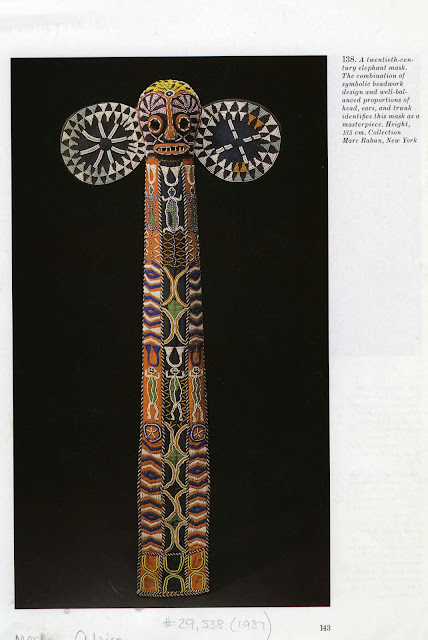The Letter "M" will get two entries rather than one, simply because it's chock full of beautiful stuff:
Music, Madonnas, Mythology, Masks (of all kinds and provenance), Mayas, Madagascar, and much more. Only a few categories provided less than I expected. Magic Carpets seemed pretty thin, though I love this bear from a car ad:
Perhaps someone else had taken all the other magic carpets home with them....
My other life as a film scholar drew me to the many folders for Moving Picture Cameras and the Moving Picture Industry. I just picked through them, randomly pulling out images that grabbed me, like this one:
I can certainly imagine "150 OF HIM" staring me in the face, and he seems a nice enough guy, but the rest of the images I chose could fit into a (fictional) folder labeled Woman With a Movie Camera. Imagine 150 OF HER:
Mary Pickford looks swell with several Mitchell movie cameras & one Bell & Howell.
And I loved this image of a seemingly intrepid CBS employee behind the (video) camera in 1978:
The caption notes that "she wants to makes films but faces obstacles - having less to do with male domination than 'insecurities I have about risks.'"
I also picked up a couple of ads for home movie cameras marketed to women.
 |
| Detail from a 1920s Saturday evening post ad |
|
The Filmo25 came in three colors and the lady on the left of the image looks great using hers. I'm not really sure "the most exciting camera ever designed" (the second image) would have really lasted a lifetime, but I do appreciate the lovely hands holding it "with pride."
When I realized I'd been unconsciously looking for images of women and tracing a historical arc through representations of women with cameras, I went to a folder where I knew I'd find a lot more women: the Madonnas folder. There were many sumptuous images, but two Italian paintings stuck with me:
This Da Messina painting depicts something both my kids continued to do long after they had stopped
breast-feeding; just checking to see if there was anything still down there, I guess. But I've never seen this represented in a painting, so it makes this madonna seem more intimate, more like a casual snapshot of family life than a painting-as-devotional-object.
I gravitated to this Fra Filippo Lippi for other reasons:
This madonna looks so sad, she could be titled "The Madonna of Post-Partum Depression." And her son looks smug, somehow, rather than god-like or even cherubic.
Though May day is long over now, I found myself looking at a range of May day images:
My brother Peter, a source of nearly unending historical fact and arcana, told me last year that May Day had a special significance in New York during the 19th century. It was a kind of universal moving day, when everyone who could moved to a new house. I believe the tradition sprung up because a city ordinance declared that all moves had to take place by May 1st in order for residents to be listed in the new city directory. So I was delighted to find a funny, ribald image of that particular May Day tradition:
And I was interested to see that it wasn't always just fun and games putting up the maypole. In fact, it could make raising the flag at Iwo Jima look easy, as in this detail from a steel engraving made in the 1850s.
But my favorite May Day image is from an unknown source, a May Day song signed by early 20th Century illustrator Edna Potter.
My six year-old daughter, Laila, who cannot read music, has now pulled this out a couple of times and begun singing these lyrics to a tune of her own composition .
As I was finishing up the scanning of thees images, I was no closer to a unified world for the letter M, but I was hearted to read another Rumi poem -
Whatever You Really See
A human being is essentially
a spirit-eye.
Whatever you really see,
you are that.
So I guess I'll keep looking...




























































